The volume of calves, their weight and how they are presented at the marts are all within the control of the farmer, but the shadow of uncontrollable events such as storms and wider health events are never far away.
Calf sales to continental Europe are at the mercy of the sea forecast and a storm or sequence of them can upset trade dramatically for a week or 10 days.
In that way, this spring is no different to any other. The calf trade will steer its way through weather events as they happen and the recent discovery of a case of foot-and-mouth disease (FMD) in Germany has led to some calf movement restrictions being put in place in the Netherlands.
“Even at this early stage, exports are good at this point compared to last year and while you’d give a health warning around things like weather and disease, all indications are the exporting trade should be strong.
“If restrictions remain on German calves coming into the Netherlands because of FMD, then that could make things dearer here. I know the calf trade is always changing, but the outlook is fairly positive for this year,” said Jonathan O’Sullivan.
The Dutch market remains an important outlet for Irish calves, especially Friesian bulls, but from 2026 that market will be lost, as only cattle from countries with an infectious bovine rhinotracheitis (IBR) free status will have access to the Netherlands.
O’Sullivan feels that work is needed to ensure other markets remain on the continent for Irish calves.
“While they haven’t given up on it yet, it looks like the last year going there. We saw last year, the numbers going to the Netherlands were back, especially early in the year, but at the same time other countries bought more.
"With the Dutch gone, that will leave a lot of calves to be distributed across all the different markets, like Spain and Poland, that will be a big change next year and a fair swing if it comes in. It’s going to be a huge loss and will put pressure on the system if it’s not replaced.”
Reduced supply
High inputs costs saw many farmers step away from calf-rearing in 2024. A strong beef trade and a reduced supply of store cattle due to increased exports of calves and weanlings could see more domestic purchasers jump back into calf rearing in 2025.
“I think the store price could see them take the option of rearing calves instead, and I’d expect more calves to stay in the country because of that.
"If you think back to autumn 2023, runners were a reasonably poor trade and when milk replacer and straw were expensive last spring, I think people didn’t want to rear many calves and were looking at buying those cheaper runners at the back end instead. That didn’t happen due to the high price and I think we started to see them look at calves instead.
"Running into Christmas, calves were a serious trade and I can see people who were rearing calves before, jump back in this year.”

Sexed semen use has seen the number of Friesian bull calves reduced but there is still a strong demand for them.
Changes
This year marks 10 years since the abolition of milk quota and O’Sullivan has spotted a few tweaks to farming systems in the mart groups catchment area.
“What I’ve seen develop is a system where people buy calves, hold them for one winter and get them to about 480-500kg and sell them as forward stores, especially in the north Cork area and into Tipperary and Waterford.
"We’re seeing less people buy calves for rearing in west Cork. Derogation has a role in that, as some of the farmers who would have bought and reared calves find it more lucrative to rent out their land to a neighbouring dairy farm,” says O’Sullivan.
If more calves are to stay in the country, that will mean improving the beef traits and he said there’s increasing awareness from dairy farmers on the need to do this.
“There’s a joint effort made on everyone’s behalf and industry has improved with the exception of a few, but it has to stay that way and I think if more calves stay in the country then they must be of better quality to leave a margin for the people rearing them. With uncertainty over exports going forward, dairy farmers are going to have to get into the habit of having better calves.”
After years where it was relatively easy to predict the trends in calf sales, last year saw changes. Like most other marts, Cork saw numbers running around two weeks behind the figures everyone was accustomed to. Along with that, there were fewer Friesian bull calves, as more and more farmers used sexed semen and opted to use beef sires earlier in the season.
While sexed semen is solving one problem, O’Sullivan felt it has pushed it a different way: “There are customers, both abroad and local, out there for good Friesians, so pushing it all down the one road isn’t ideal either.
"All these different beef breeds will make for a better trade, but the plainer Angus and Hereford, especially out of crossbred dams, will still be a harder sell. Last year, the quality of calves was better overall and we found they were much more saleable at three weeks rather than two weeks. But it will always be a tougher trade for lesser-quality calves regardless of the breed.”
The volume of calves, their weight and how they are presented at the marts are all within the control of the farmer, but the shadow of uncontrollable events such as storms and wider health events are never far away.
Calf sales to continental Europe are at the mercy of the sea forecast and a storm or sequence of them can upset trade dramatically for a week or 10 days.
In that way, this spring is no different to any other. The calf trade will steer its way through weather events as they happen and the recent discovery of a case of foot-and-mouth disease (FMD) in Germany has led to some calf movement restrictions being put in place in the Netherlands.
“Even at this early stage, exports are good at this point compared to last year and while you’d give a health warning around things like weather and disease, all indications are the exporting trade should be strong.
“If restrictions remain on German calves coming into the Netherlands because of FMD, then that could make things dearer here. I know the calf trade is always changing, but the outlook is fairly positive for this year,” said Jonathan O’Sullivan.
The Dutch market remains an important outlet for Irish calves, especially Friesian bulls, but from 2026 that market will be lost, as only cattle from countries with an infectious bovine rhinotracheitis (IBR) free status will have access to the Netherlands.
O’Sullivan feels that work is needed to ensure other markets remain on the continent for Irish calves.
“While they haven’t given up on it yet, it looks like the last year going there. We saw last year, the numbers going to the Netherlands were back, especially early in the year, but at the same time other countries bought more.
"With the Dutch gone, that will leave a lot of calves to be distributed across all the different markets, like Spain and Poland, that will be a big change next year and a fair swing if it comes in. It’s going to be a huge loss and will put pressure on the system if it’s not replaced.”
Reduced supply
High inputs costs saw many farmers step away from calf-rearing in 2024. A strong beef trade and a reduced supply of store cattle due to increased exports of calves and weanlings could see more domestic purchasers jump back into calf rearing in 2025.
“I think the store price could see them take the option of rearing calves instead, and I’d expect more calves to stay in the country because of that.
"If you think back to autumn 2023, runners were a reasonably poor trade and when milk replacer and straw were expensive last spring, I think people didn’t want to rear many calves and were looking at buying those cheaper runners at the back end instead. That didn’t happen due to the high price and I think we started to see them look at calves instead.
"Running into Christmas, calves were a serious trade and I can see people who were rearing calves before, jump back in this year.”

Sexed semen use has seen the number of Friesian bull calves reduced but there is still a strong demand for them.
Changes
This year marks 10 years since the abolition of milk quota and O’Sullivan has spotted a few tweaks to farming systems in the mart groups catchment area.
“What I’ve seen develop is a system where people buy calves, hold them for one winter and get them to about 480-500kg and sell them as forward stores, especially in the north Cork area and into Tipperary and Waterford.
"We’re seeing less people buy calves for rearing in west Cork. Derogation has a role in that, as some of the farmers who would have bought and reared calves find it more lucrative to rent out their land to a neighbouring dairy farm,” says O’Sullivan.
If more calves are to stay in the country, that will mean improving the beef traits and he said there’s increasing awareness from dairy farmers on the need to do this.
“There’s a joint effort made on everyone’s behalf and industry has improved with the exception of a few, but it has to stay that way and I think if more calves stay in the country then they must be of better quality to leave a margin for the people rearing them. With uncertainty over exports going forward, dairy farmers are going to have to get into the habit of having better calves.”
After years where it was relatively easy to predict the trends in calf sales, last year saw changes. Like most other marts, Cork saw numbers running around two weeks behind the figures everyone was accustomed to. Along with that, there were fewer Friesian bull calves, as more and more farmers used sexed semen and opted to use beef sires earlier in the season.
While sexed semen is solving one problem, O’Sullivan felt it has pushed it a different way: “There are customers, both abroad and local, out there for good Friesians, so pushing it all down the one road isn’t ideal either.
"All these different beef breeds will make for a better trade, but the plainer Angus and Hereford, especially out of crossbred dams, will still be a harder sell. Last year, the quality of calves was better overall and we found they were much more saleable at three weeks rather than two weeks. But it will always be a tougher trade for lesser-quality calves regardless of the breed.”





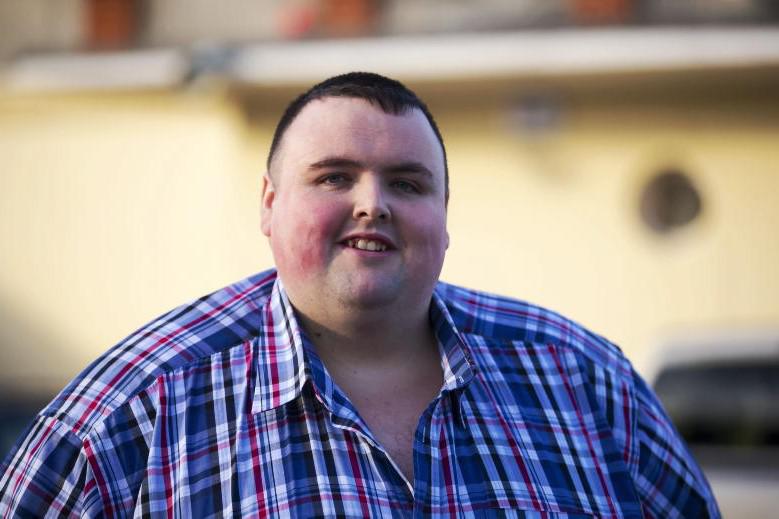
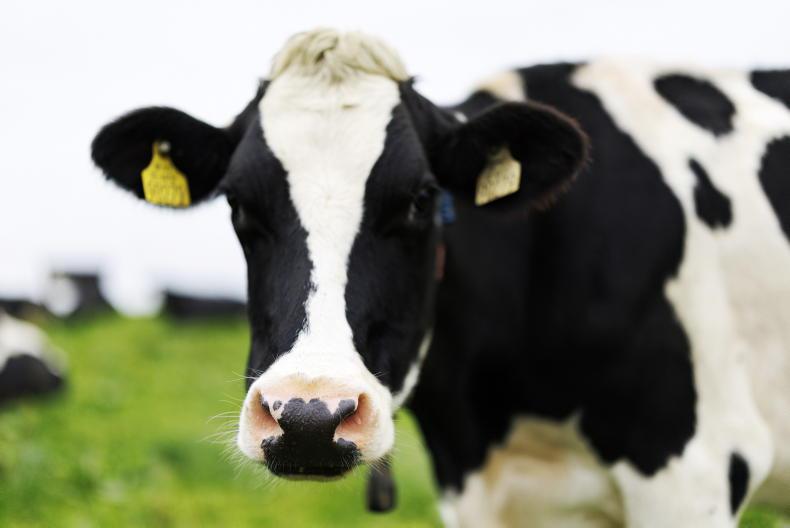
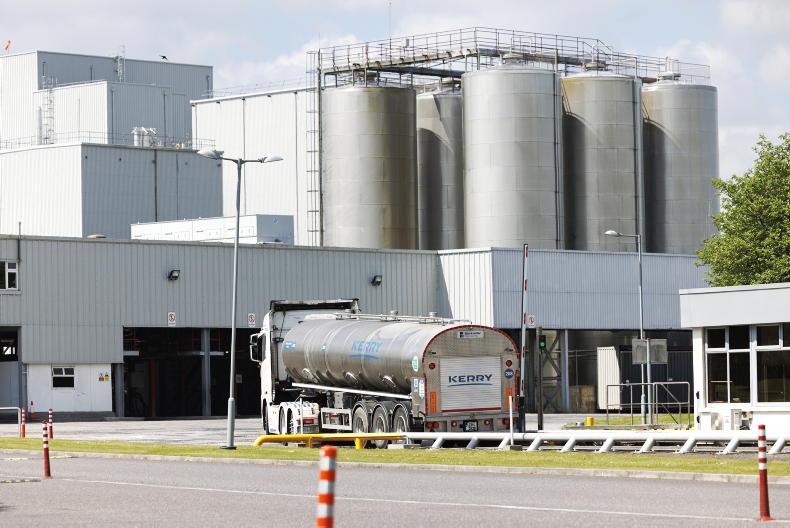
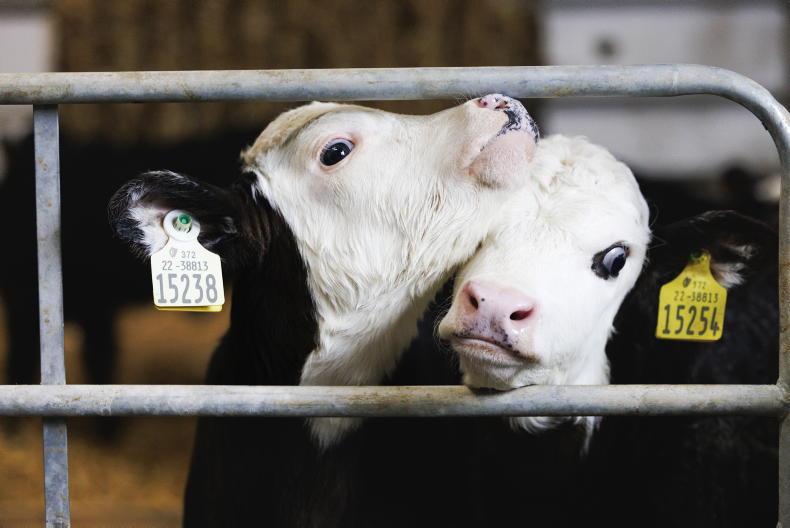
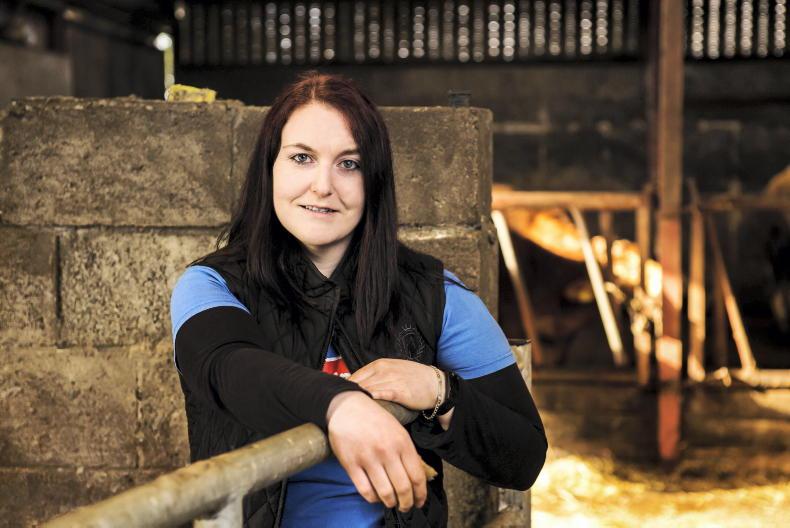
SHARING OPTIONS